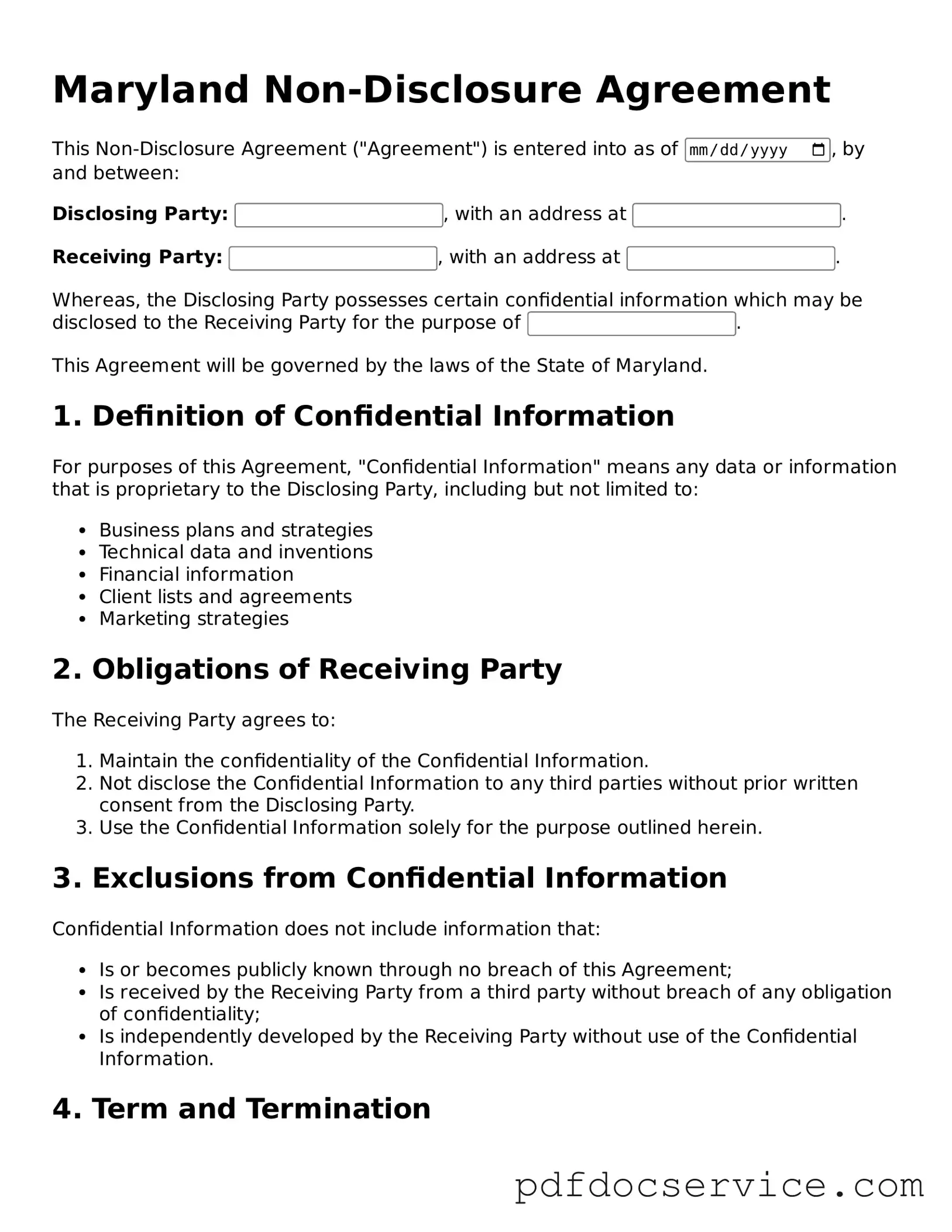What is a Maryland Non-disclosure Agreement (NDA)?
A Maryland Non-disclosure Agreement (NDA) is a legally binding contract designed to protect confidential information shared between parties. It ensures that sensitive information remains private and is not disclosed to unauthorized individuals or entities.
When should I use a Non-disclosure Agreement?
An NDA should be used whenever confidential information is shared, especially in business relationships. Common scenarios include:
-
Discussions about potential partnerships or collaborations.
-
Sharing proprietary information, such as trade secrets or business plans.
-
Engaging with employees or contractors who will have access to sensitive data.
Who can sign a Maryland NDA?
Any individual or business entity can sign a Maryland NDA. This includes:
-
Individuals (employees, freelancers, etc.)
-
Businesses (corporations, partnerships, etc.)
-
Non-profit organizations
What should be included in a Non-disclosure Agreement?
A comprehensive NDA typically includes the following elements:
-
The definition of confidential information.
-
The obligations of the receiving party to protect the information.
-
The duration of the confidentiality obligation.
-
Exclusions from confidentiality.
-
Consequences for breach of the agreement.
How long does the confidentiality obligation last?
The duration of the confidentiality obligation can vary. Generally, NDAs specify a time frame, which can range from a few years to indefinitely, depending on the nature of the information. It's important to clearly state this duration in the agreement.
What happens if someone breaches the NDA?
If someone breaches the NDA, the injured party may seek legal remedies. This could include:
-
Injunctions to prevent further disclosure.
-
Monetary damages for any losses incurred.
-
Legal fees associated with enforcing the agreement.
Can an NDA be modified after it is signed?
Yes, an NDA can be modified after it is signed, but both parties must agree to the changes. It is advisable to document any modifications in writing and have both parties sign the updated agreement to ensure clarity and enforceability.
Is a verbal NDA enforceable in Maryland?
While verbal agreements can be enforceable, they are often harder to prove in court. It is always recommended to have a written NDA to clearly outline the terms and protect both parties' interests.
Do I need a lawyer to draft a Non-disclosure Agreement?
While it's not legally required to have a lawyer draft an NDA, it is highly advisable. A legal professional can ensure that the agreement is comprehensive, enforceable, and tailored to your specific needs.
Where can I find a template for a Maryland Non-disclosure Agreement?
Templates for Maryland NDAs can be found online through various legal websites, or you can consult with a lawyer for a custom draft. Ensure that any template you use complies with Maryland laws and fits your specific situation.
